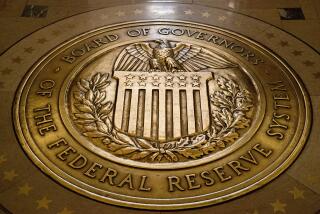OPEC Agrees to Hold Down Production to Spur Prices : Oil: Disarray among members casts doubt on cartel’s goal. Experts predict only a minimal effect at the gas pump.
- Share via
After days of arguing among themselves, the OPEC nations agreed Thursday to freeze crude oil production at current levels to try to force up world oil prices this winter.
Meeting in Geneva, the Organization of Petroleum Exporting Countries set fourth-quarter production levels at 24.2 million barrels a day, hoping that increased year-end demand will drive prices to the cartel’s target of $21 a barrel. Crude delivered in the Persian Gulf sold for $19.64 on Tuesday.
But disarray among OPEC members--including reports that Iran would not sign the agreement and, most dramatically, Ecuador’s withdrawal from the cartel altogether, the first OPEC nation to do so--only increased doubt among industry experts that OPEC could hold to its goal.
Meanwhile, most observers predicted only minimal effects, if any, on the price of gasoline at the pump this winter.
The agreement, which set no individual quotas for member countries, was “very wishy-washy,” said Fareed Mohamedi, senior economist in the Washington office of Petroleum Finance Co.
“The ministers,” Mohamedi said, “especially of Saudi Arabia and Iran, decided to act out a dress rehearsal of the market-share battles which we had seen earlier in the year and which we expect to re-emerge next year.”
The central issue pits Iran against Saudi Arabia over what share of OPEC production each will have. Iran has led attempts to restrict OPEC production to drive up prices. But Saudi Arabia has sought increased production.
With immense reserves and at least 8 million barrels a day in contracts with buyers, the Saudis want to institutionalize their current 35% share of the OPEC total before the tough fights to come--when Iraq begins oil production again. Before the Persian Gulf War, Saudi Arabia had only a 25% share. But many observers remain skeptical that demand will push prices much higher.
“They’d better hope for a cold winter,” said Louis P. James, executive director of AUS Consultants, energy analysts based in Bala-Cynwyd, Pa. The last two warm winters have kept demand low, James noted.
Meanwhile, OPEC’s continuing internal arguments led experts to doubt that the cartel could restrict members’ production--particularly with no quotas--if demand does rise. Ecuador said it might drop full membership in the cartel unless it can meet an urgent domestic need for hard currency by increasing production. On the other side, Iran threatened to turn up its production briefly in protest if any OPEC members break ranks.
As for consumer prices, industry observers see no significant gasoline price hikes from the OPEC move. An increase of a dollar or two a barrel--the most OPEC could expect--normally translates into no more than a few cents’ difference in a gallon of gasoline at the pump.
And other factors could play a role this winter. For instance, gasoline with increased oxygen content--required by the Clean Air Act for Los Angeles and other smog-troubled cities beginning Nov. 1--by some estimates could add 3 cents a gallon this year.
Still, such small price changes “are normally lost in the noise of fluctuations in the marketplace,” said Thomas G. Burns, manager of economics for Chevron Corp.
The most volatile reaction to the OPEC agreement came in the oil futures market.
But that was largely fueled by early, inaccurate reports that Iran would drastically increase production to show its anger over the lack of heavier cuts.
But by trading’s end Thursday, the futures market had calmed down. Benchmark U.S. crude for delivery in October settled down 9 cents at $22.30 a barrel.
More to Read
Sign up for Essential California
The most important California stories and recommendations in your inbox every morning.
You may occasionally receive promotional content from the Los Angeles Times.










